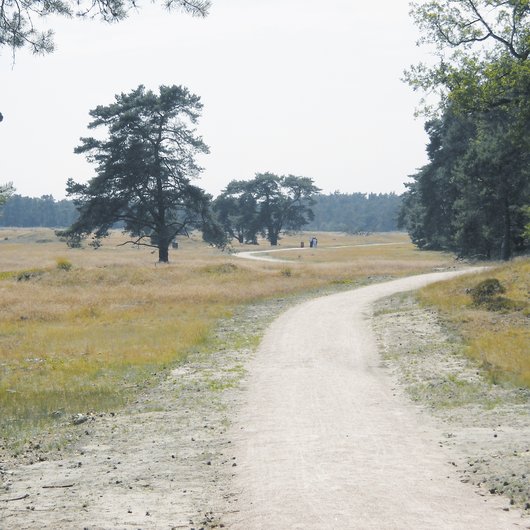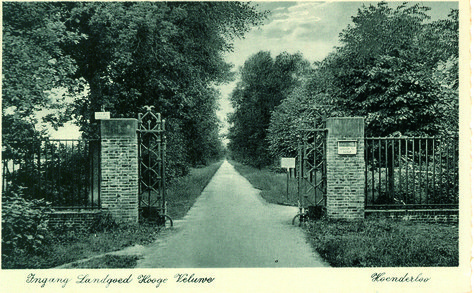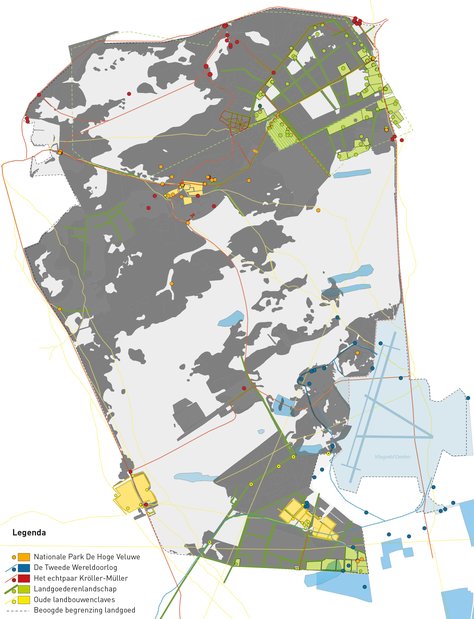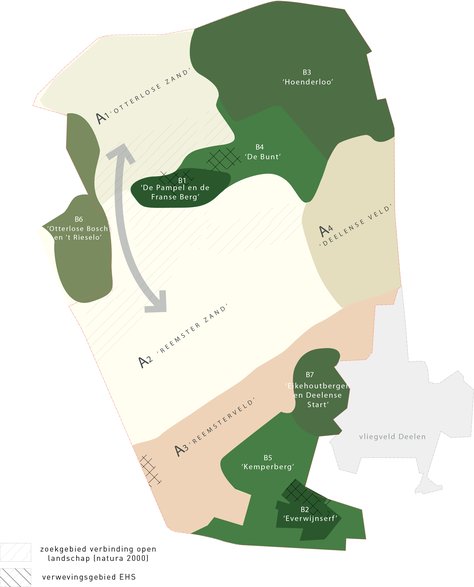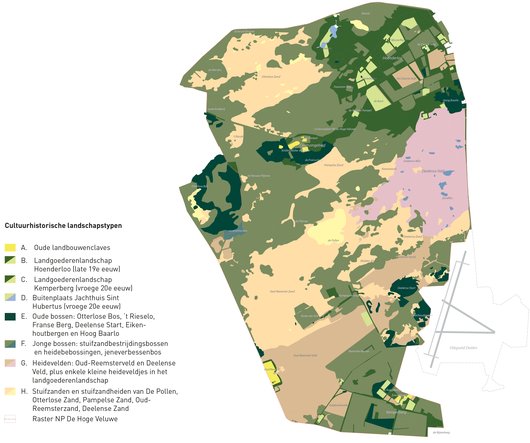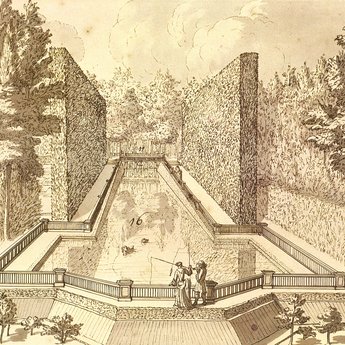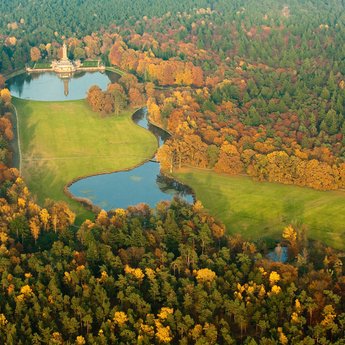Motive
LEGACY
The Hoge Veluwe National Park was established 75 years ago in order to retain the legacy and ideas of the Kröller Müller couple. The most important goal is to retain the autonomy of the park and to possibly reinforce the combination of nature, art and architecture and allowing visitors to enjoy this. But from what vision does this take place?
AREA-SPECIFIC APPROACH
In 2007 an analysis on cultural-historical values in the park was presented. In subsequent years we worked on the development and description of a cultural-historical vision in order to deal with these values responsibly. The vision abandons the object-oriented approach and is based on an area-specific approach promoting a coherent image of cultural-historical landscape development and the elements which are part of this.
